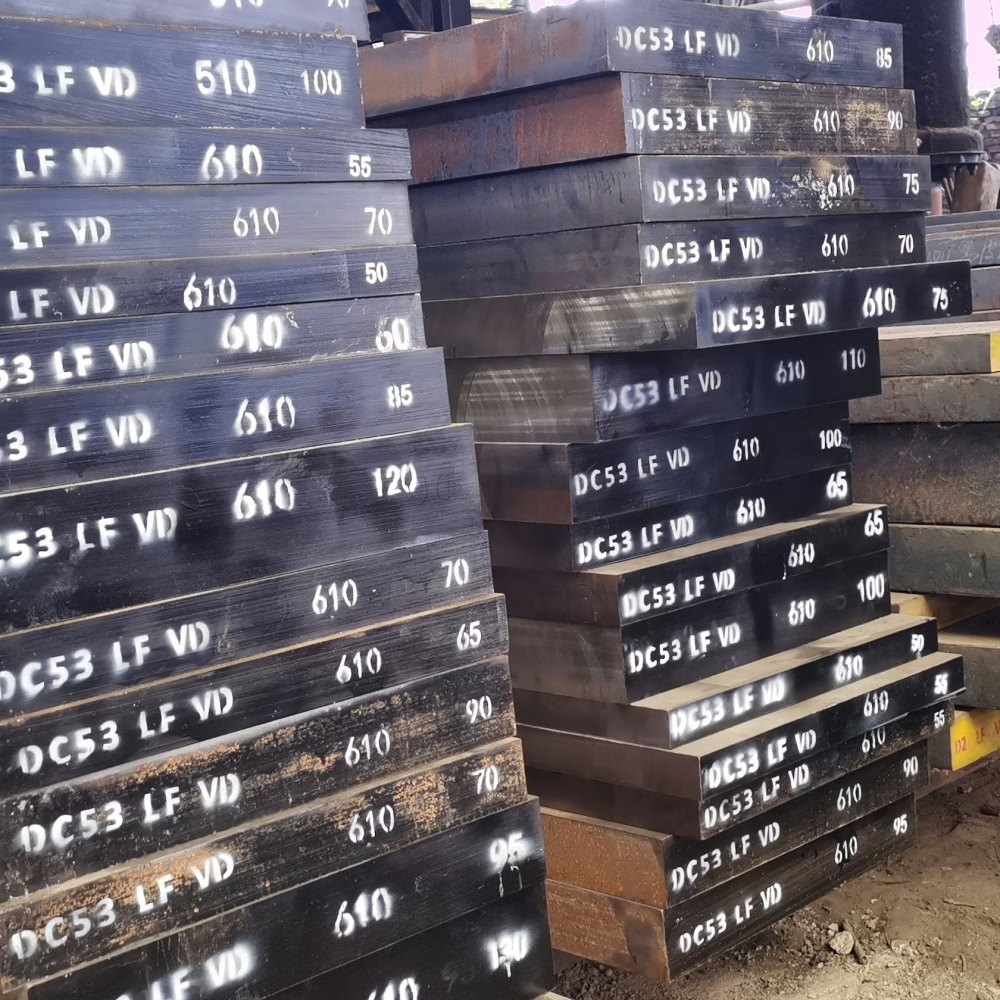
DC53 TOOL STEEL
Aobo Steel – Trusted Global Tool Steel Supplier
DC53 steel is a high-chromium steel and a general-purpose high-toughness cold-work die steel. After quenching and tempering at 520-530°C, its hardness can reach 62-63 HRC, which is higher than that of SKD11 steel. Although its hardness is 2-3 HRC higher, its wear resistance is greatly improved, and its impact toughness is significantly enhanced, making it an excellent steel grade to replace D2.

1. Application
Blanking dies, cold forming dies, cold drawing dies, forming roll punches, and cold extrusion dies are essential for shaping and cutting materials in cold-working processes.
Precision blanking and various types of stamping dies for wire cutting processing are ideal for intricate and accurate cutting tasks.
Plastic deformation dies for difficult-to-machine materials: This includes cold forging, deep drawing, and thread rolling dies, as well as high-speed blanking punches and stainless steel sheet punches, suited for challenging material processing.
Cold stamping dies requiring high wear resistance, hardness, and toughness are perfect for demanding stamping operations that require durability and strength.
Dies with higher performance requirements than D2 steel and molds needing exceptional toughness: DC53 offers superior performance and excellent cost-effectiveness in these scenarios.
Large molds and precision molds: Suitable for applications where size and precision are critical.
2. composition
| Element | Carbon (C) | Silicon (Si) | Manganese (Mn) | Chromium (Cr) | Molybdenum (Mo) | Vanadium (V) |
| Percentage (%) | 0.90 – 1.10 | 1 | 0.4 | 8 | 2 | 0.3 |
3. Heat treatment
Hardening process
The first step is quenching. The process involves heating the material to a high temperature of 940-960°C, followed by rapid cooling, usually with air or oil cooling.
Tempering
After quenching, a tempering treatment is applied. There are two types of tempering for DC53 steel:
- Low-temperature tempering (180-220°C): This method is suitable for molds requiring very high hardness. The hardness after tempering can reach 60-62 HRC, which is particularly wear-resistant.
- High-temperature tempering (520-530°C): This method maintains a high hardness (62-63 HRC) and makes the steel more ductile, which is ideal for molds that need to be strong and durable.
Heat treatment precautions
- It should be in a step-warming manner to avoid heating too fast and causing the material to open up.
- After tempering the material, the air cools to room temperature.
- If the material is used to make precision molds, it is recommended that it be tempered at a high temperature of 520-530°C for the best results.
